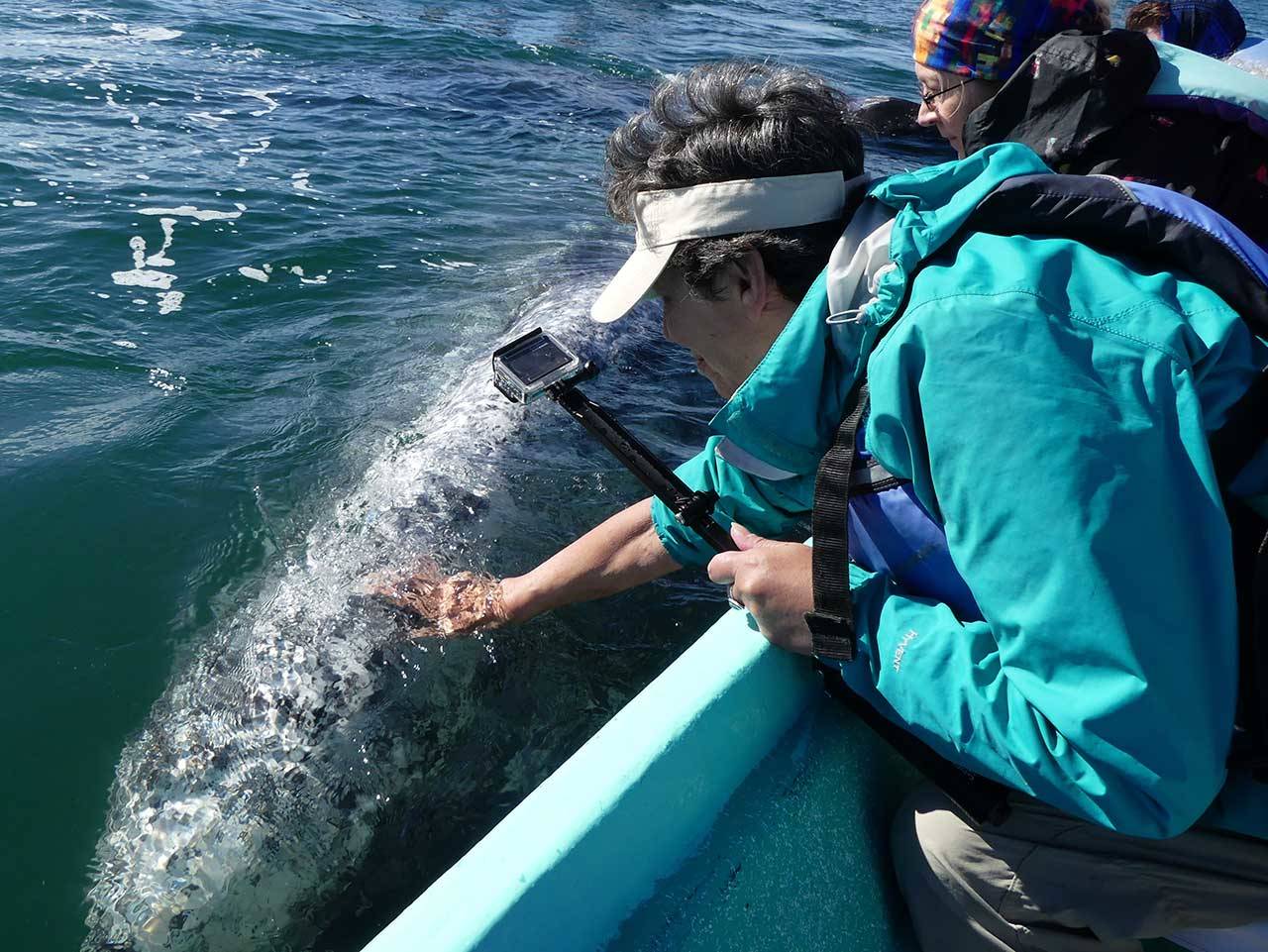Each March, Susan Berta and Howard Garrett travel to San Ignacio Lagoon in Baja, Mexico where Pacific Gray whales winter, breed and hang out with humans.
“We could not believe the whales were actually choosing to come and interact with the excited and happy humans on the boats in the lagoon until we experienced it first hand,” Berta recalled of her initial trip, in 2007.
“Huge mom gray whales came right up to the boats with their calves, sometimes the moms wanting as much attention as the calves,” she added.
The whales nuzzle the small boats, called pangas, and don’t retreat when a human reaches out to pat their head or decides to serenade them with a tune or two. The whales also engage in more expected ways, such as spyhopping, breaching and mating.
Berta and Garrett are co-founders of Orca Network, a nonprofit that operates the Langley Whale Center and is dedicated to raising awareness of the Pacific Northwest whales and habitat. More than a decade ago, it started leading guided tours to San Ignacio Lagoon for the educational and “life-changing” moments experienced by participants, Berta said.
Additionally, the “Sounders,” a group of gray whales that regularly visit Saratoga Passage during the annual migration from Mexico to Canada, sparked interest in the whales’ habitats and behaviors. The trip also raises funds to support Orca Network programs.
Orca Network is offering an expedition to see the whales March 4-8 through a tour company. The trip costs $3,500 per person, with $500 going toward Orca Network’s educational programs and other needs.
Included in the cost are transportation from San Diego to Campo Cortez at San Ignacio Lagoon, meals, lodging, happy hours and two daily whale watching trips in small boats.
Seeing eye-to-eye with a gray whale is an unforgettable encounter, said Sandra Pollard, who was on the trip in 2011.
“Seeing their trust as the mothers surface near the pangas with their calves is humbling, allowing — almost inviting — us to touch their mottled rubbery skin,” Pollard said.
“Watching the testosterone-fueled males exhaling loudly as they power through the warm blue waters on their breeding mission leaves one in no doubt as to their rightful place on the planet.”
The lagoon also has historical significance, added Pollard, who wrote two books on Puget Sound orcas.
It’s one of the regions where gray whales were slaughtered in the 19th century almost to the point of extinction.
They were known as as “devil fish” back then because, when whalers harpooned calves, the mothers destroyed many small whaling boats. After given full protection in 1946 by the International Whaling Commission, the population of gray whales is estimated to have rebounded to 20,000.
Gray whales migrate from the Bering Sea and winter in southern waters before making the 5,000-mile return trip north in the spring. The whales of San Ignacio Lagoon were first systematically studied between 1977 and 1982.
In the United States, it’s illegal to touch or interact with marine mammals, and Orca Network makes clear it doesn’t advocate or encourage people to touch marine mammals.
“The friendly whales of Baja is a special situation in which the whales began approaching humans and from that arose a very well managed and regulated ecotourism,” Berta said.
It’s a small percentage of the gray whales, known as the “Friendlies,” and they are not only curiously hospitable but trustworthy.
It’s not unusual for almost the whole body of a mother whale to be under a boat as it bobs its craggy head above water.
“One flick of her flukes,” observed Howard Garrett of Orca Network, “and mom could toss our boat into the air. But they are as gentle with us as we are with them.”
No doubt, the staff that guide the whale tours have seen many a strange sight as they watch the whale watchers.
Fred Lundahl, of Langley, went on the Orca Network trip in 2012 with his wife Sharon. One afternoon, he brought his harmonica on the daily boat tour.
“I charmed the whales by touching them with one hand and playing the harmonica with the other,” he said. “The vibrations went through my hand and they just lay there and were mesmerized.”
For information about the trip, email info@orcanetwork.org or call 360-331-3543.
To see photos from previous trips, www.orcanetwork.org


